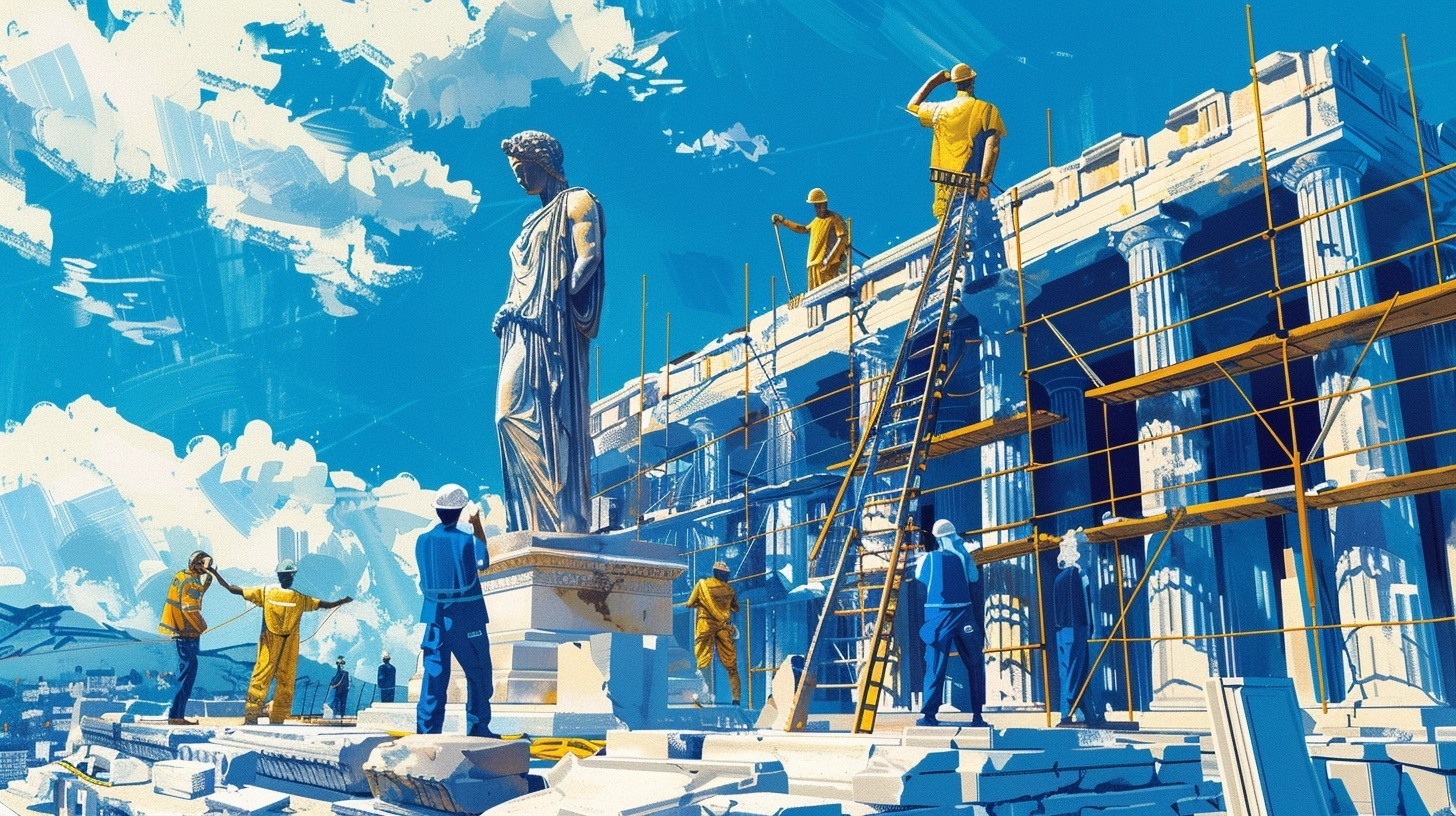A Game-Changing $264M Investment for Construction's Future
Today we’re proud to announce that Constrafor has secured $264 million ($14M equity and $250Mcredit facility) to help solve some of construction's...
4 min read
 Ryan Donaldson
:
Jul 26, 2024 10:40:20 AM
Ryan Donaldson
:
Jul 26, 2024 10:40:20 AM

While the world watches athletes vie for gold medals this summer in Paris, we in the construction industry know where the real Olympic champions are found - in the concrete, steel, and innovation that form the Olympic Villages. These colossal projects are the unsung heroes of the Games, sprinting from blueprint to reality in record time and hurdling over countless challenges along the way. So, let's take a victory lap through history and honor the most impressive Olympic Village builds that deserve to take the winners podium.
From Tokyo's headline-grabbing cardboard beds (sturdy enough for athletic activities, wink wink) to Paris's upcoming wooden wonderland, these villages are proving that in the construction world, it's not just about hosting two weeks of games - it's about building a legacy that could go toe-to-toe with any gold medal performance. Ready to see which village takes the top spot on our podium? Let the games begin!
The London Village was a treasure trove of hidden sustainability features. Unbeknownst to many athletes, their morning showers were heated by excess energy from the nearby Olympic broadcasting center. Even more fascinating, the village's landscaping included "secret" rainwater channels disguised as decorative features, which collected and redistributed water throughout the site. Perhaps most surprisingly, some of the building materials came from unexpected sources - including wood from dismantled London dockyards and even old kitchen cabinets!
This village stands out for its sustainability and legacy planning. After the Games, it was transformed into the East Village, a mixed-use neighborhood with affordable housing, schools, and community spaces. The construction incorporated numerous green technologies and set new standards for sustainable development.
Construction Techniques & Innovations:
Standout Features:
With athletes arriving in Paris, we're getting the inside look at the new Paris Village. And yes, the cardboard beds are back! But this village is set to make history in another unusual way: it's tackling a subterranean challenge that would make any engineer sweat. Parts of the village are being built atop former gypsum mines, a geological curveball that required some truly Olympic-level problem-solving. Gypsum, the mineral used in plasterboard, is notorious for dissolving when exposed to water, creating unpredictable voids underground. To counter this, engineers employed a multi-pronged approach. They conducted extensive geotechnical surveys using ground-penetrating radar and boreholes to map out the underground landscape. Then came the 'grouting' - injecting a specially formulated concrete mixture into the ground under high pressure, filling voids and strengthening the subsurface.
Above ground, the village is making waves too. It will feature Europe's largest solid wood construction, sourcing timber from sustainably managed French forests. In a nod to French culinary tradition, the village will also house an unprecedented 128 different spots for athletes to dine, showcasing cuisines from around the world.
Construction Techniques & Innovations:
Standout Features:
Barcelona's Village transformation was so dramatic that it coined a new term in urban planning: the "Barcelona Model." But what many don't know is that the project unearthed significant Roman ruins during construction, leading to a fascinating blend of ancient and modern within the village. The beach volleyball venue was created by importing 7,000 tons of sand from Egypt, which dramatically changed the city's coastline forever. Interestingly, some of the village's buildings were designed to mimic the shape of a hand, a subtle homage to the city's famous architect, Antoni Gaudí.
This project is renowned for its urban regeneration impact. It transformed a declining industrial waterfront into a vibrant new neighborhood, opening up the city to the sea. The village's design blended seamlessly with Barcelona's urban fabric and became a model for Olympic-driven city revitalization.
Construction Techniques & Innovations:
Standout Features:
Notable for being one of the largest Olympic Villages at the time, it housed 15,000 athletes and officials. The village was praised for its eco-friendly design, incorporating solar power and water recycling systems. Post-Games, it was successfully converted into a suburban community called Newington.
Sydney's Village was nicknamed "Green Games," but not just for its environmental features. It was home to over 16,000 trees and shrubs, creating a literal urban forest. An interesting quirk was the "solar bugs" - small solar-powered vehicles that shuttled athletes around the village. Perhaps most remarkably, the village was home to a population of endangered green and golden bell frogs, which were carefully protected throughout construction and the Games, even having their own dedicated "frog ponds.”
Construction Techniques & Innovations:
Standout Features:
Tokyo's Village gained fame for introducing cardboard beds, sturdy enough to support 200 kg but recyclable after the Games. Less well-known was the "Village Plaza," constructed entirely from donated wood from 63 Japanese municipalities, which was later returned and repurposed in those communities. In a high-tech twist, the village featured robot concierges that could speak 20 languages, helping athletes navigate the complex.
Despite the challenges posed by the COVID-19 pandemic, the Tokyo Olympic Village was an impressive feat of modern construction. The village is now being converted into a mixed-use urban development.
Construction Techniques & Innovations:
Standout Features:
These villages show us that the true Olympic spirit isn't just about faster, higher, stronger - it's also about smarter, greener, and more enduring. Each project has left legacies that extend far beyond the closing ceremonies, transforming cityscapes and setting new standards for sustainable development.

Today we’re proud to announce that Constrafor has secured $264 million ($14M equity and $250Mcredit facility) to help solve some of construction's...

Cycle of Frustration You’ve done the work. Your crew has moved on. The invoice? Approved. But the payment? Still weeks, or even months, away.

Design-build has emerged as America's fastest-growing construction delivery method, projected to represent over 47% of construction spending by 2026...